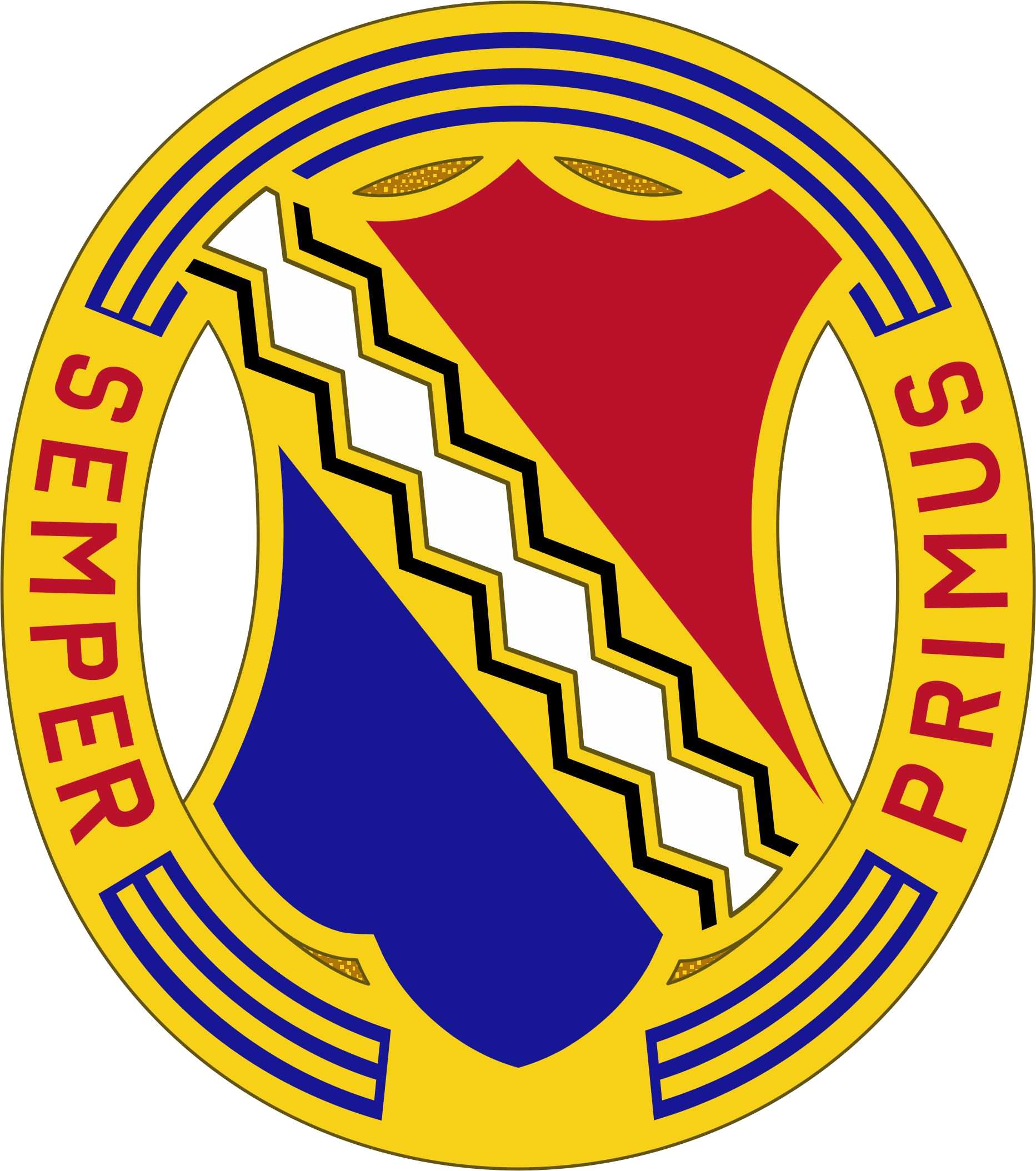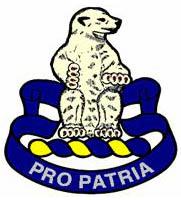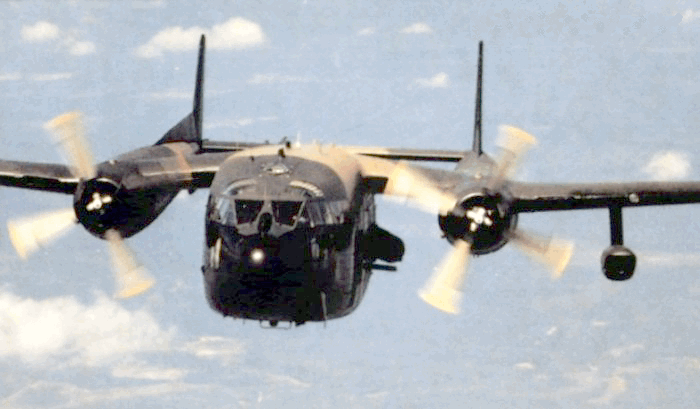|
Operation Frederick Hill
Operation Frederick Hill was a security operation during the Vietnam War in Quang Tin Province, that took place from 18 March 1969 to 28 February 1971. Background The operation was conducted by the 196th Light Infantry Brigade, 23rd Infantry Division in cooperation and coordination with the Army of the Republic of Vietnam (ARVN) 5th Regiment to secure pacification operations near the coastal areas and the destruction of People's Army of Vietnam (PAVN) and Vietcong (VC) units operating in the area. Operation 1969 On 31 March at 15:00, troops from the Brigade's armored cavalry squadron engaged PAVN/VC soldiers north northwest of Tam Kỳ. The PAVN/VC withdrew leaving 10 dead and 1 weapon. On 7 May an element of the brigade found two weapons caches totaling 4.5 tons southwest of Tam Kỳ. At 01:24 on 12 May a PAVN/VC force attacked a brigade night defensive position south of Hoi An, the attack was repulsed and 36 PAVN/VC killed and 11 individual and 7 crew-served weapons were c ... [...More Info...] [...Related Items...] OR: [Wikipedia] [Google] [Baidu] |
Vietnam War
The Vietnam War (1 November 1955 – 30 April 1975) was an armed conflict in Vietnam, Laos, and Cambodia fought between North Vietnam (Democratic Republic of Vietnam) and South Vietnam (Republic of Vietnam) and their allies. North Vietnam was supported by the Soviet Union and China, while South Vietnam was supported by the United States and other anti-communist nations. The conflict was the second of the Indochina wars and a proxy war of the Cold War between the Soviet Union and US. The Vietnam War was one of the postcolonial wars of national liberation, a theater in the Cold War, and a civil war, with civil warfare a defining feature from the outset. Direct United States in the Vietnam War, US military involvement escalated from 1965 until its withdrawal in 1973. The fighting spilled into the Laotian Civil War, Laotian and Cambodian Civil Wars, which ended with all three countries becoming Communism, communist in 1975. After the defeat of the French Union in the First Indoc ... [...More Info...] [...Related Items...] OR: [Wikipedia] [Google] [Baidu] |
South Vietnamese Regional Forces
The South Vietnam South Vietnam, officially the Republic of Vietnam (RVN; , VNCH), was a country in Southeast Asia that existed from 1955 to 1975. It first garnered Diplomatic recognition, international recognition in 1949 as the State of Vietnam within the ...ese Regional Forces (, lit. "Local Army"), originally the Civil Guard, were a component of Army of the Republic of Vietnam (ARVN) territorial defence forces. Recruited locally, they served as full-time province-level forces, originally raised as a militia. In 1964, the Regional Forces were integrated into the ARVN and placed under the command of the Joint General Staff. The concept of Regional Forces was to counter the Viet Cong (VC) Viet Cong and PAVN strategy, organization and structure, Local Force units, while the ARVN regular forces fought the better equipped VC Main Force units and the People's Army of Vietnam (PAVN). Local militia came to play a very effective role in the war, as the style of small-unit warf ... [...More Info...] [...Related Items...] OR: [Wikipedia] [Google] [Baidu] |
16th Field Artillery Regiment
The 16th Field Artillery Regiment is a field artillery regiment of the United States Army. The regiment served with the 4th Division in World War II and with the 4th and 8th Divisions between the World Wars. As the 16th Armored Field Artillery Battalion, it served with the 9th Armored Division during World War II, and with the 2nd Armored Division after the war. Designated a parent regiment under the Combat Arms Regimental system, and later the U.S. Army Regimental System, since 1957, regimental elements have served with the 1st, 2nd and 4th Armored Divisions; the 4th, 8th, and 81st Infantry Divisions; and the 1st Cavalry Division. Regimental elements have participated in combat in Vietnam, and in Operation Iraqi Freedom. The regiment currently has a single active battalion, the 3rd Battalion, 16th Field Artillery, assigned to the 2nd Brigade Combat Team, 1st Cavalry Division and stationed at Fort Cavazos, Texas. History The 16th Field Artillery was constituted 1 July 1916 in ... [...More Info...] [...Related Items...] OR: [Wikipedia] [Google] [Baidu] |
1st Infantry Regiment (United States)
The 1st Infantry Regiment is a regiment of the United States Army that draws its lineage from a line of post American Revolutionary War units and is decorated with thirty-nine campaign streamers. The 1st Battalion, 1st Infantry is assigned as support to the United States Military Academy at West Point, New York and to furnish the enlisted garrison for the academy and the Stewart Army Subpost. 2nd Battalion, 1st Infantry Regiment is an infantry component serving with the 2nd Stryker Brigade, 2nd Infantry Division at Joint Base Lewis–McChord, Washington. History Origins On 3 March 1791, Congress added to the Army "The Second Regiment of Infantry" from which today's First Infantry draws its heritage. In September of that year, elements of it and the original 1st Infantry Regiment (today's 3rd United States Infantry Regiment (The Old Guard)), with sizable militia complements, all under the command of General Arthur St. Clair, were sent to the Northwest Indian War of t ... [...More Info...] [...Related Items...] OR: [Wikipedia] [Google] [Baidu] |
Hughes OH-6 Cayuse
The Hughes OH-6 Cayuse is a single-engine light helicopter designed and produced by the American aerospace company Hughes Helicopters. Its formal name is derived from the Cayuse people, while its "Loach" nickname is derived from Light Observation Helicopter (LOH) program under which it was procured. The OH-6 was developed to meet United States Army Technical Specification 153, issued in 1960 to replace its Bell H-13 Sioux fleet. The ''Model 369'' submitted by Hughes competed against two other finalists, Fairchild-Hiller and Bell, for a production contract. On 27 February 1963, the first prototype conducted its maiden flight. The Model 369 had a distinctive teardrop-shaped fuselage that was crashworthy and provided excellent external visibility. Its four-bladed full-articulated main rotor made it particularly agile, and it was suitable for personnel transport, escort and attack missions, and observation. During May 1965, the U.S. Army awarded a production contract to Hughes. D ... [...More Info...] [...Related Items...] OR: [Wikipedia] [Google] [Baidu] |
1st Cavalry Regiment (United States)
The 1st Cavalry Regiment is a United States Army regiment that has its antecedents in the early 19th century in the formation of the United States Regiment of Dragoons. To this day, the unit's special designation is "First Regiment of Dragoons". While they were the First Regiment of Dragoons, another unit designated the 1st Cavalry Regiment was formed in 1855 and in 1861 was re-designated the 4th Cavalry Regiment (units were renumbered based on seniority, and it was the fourth oldest mounted regiment in active service). The First Dragoons became the 1st Cavalry Regiment, since they were the oldest mounted regiment. Background During the American Revolutionary War (1775–1783), Continental forces patterned cavalry units after those of the opposing British forces, especially the well-supplied mounted dragoons of the British Army. The first cavalry unit formed by the Congress of the United States of America was a squadron of four troops (the Squadron of Light Dragoons) command ... [...More Info...] [...Related Items...] OR: [Wikipedia] [Google] [Baidu] |
31st Infantry Regiment (United States)
The 31st Infantry Regiment ("Polar Bears") of the United States Army was formed on 13 August 1916, and was part of U.S. Army Forces Far East, USAFFE's Philippine Division (United States), Philippine Division during World War II. The unit is rare in that it was formed and has spent most of its life on non-American soil. The regiment is the third to bear the designation; the first was formed for the War of 1812 and disbanded in 1815. The second was created from the 3rd Battalion of the 13th Infantry Regiment (United States), 13th Infantry on 28 July 1866, in the reorganization of the U.S. Army following the American Civil War. The second organization to be called the 31st Infantry was consolidated with its sister regiment the 22d Infantry Regiment (United States), 22nd Infantry (also formed out of the 13th) in an 1869 reorganization. Because the lineage of the previous regiments called the 31st were passed down to their successor units, the current 31st Infantry Regiment does no ... [...More Info...] [...Related Items...] OR: [Wikipedia] [Google] [Baidu] |
21st Infantry Regiment (United States)
The 21st Infantry Regiment ("Gimlet") is a United States Army infantry regiment. The 1st Battalion currently exists as part of 2nd Infantry Brigade Combat Team, 25th Infantry Division. The regiment fought in World War II, the Korean War and the Vietnam War, as well as Operation Iraqi Freedom. Task Force Smith, the first American unit to see action in the Korean War, was derived from the regiment's 1st Battalion. History Civil War The 21st Infantry traces its history back to the 2nd Battalion of the 12th Infantry Regiment, formed on 3 May 1861 for the American Civil War. Companies A, B, E and G were activated at Fort Hamilton on 20 May 1862. They were sent to Harpers Ferry and on 26 May fought in a skirmish with a Confederate States Army brigade. The companies fought at the Battle of Cedar Mountain on 9 August. The companies were formed into a battalion with elements of the 8th Infantry Regiment and were the lead skirmishers of the II Corps' 2nd Division. They helped to ... [...More Info...] [...Related Items...] OR: [Wikipedia] [Google] [Baidu] |
46th Infantry Regiment (United States)
The 46th Infantry Regiment ("The Professionals") is a unit in the United States Army that served in World War II and Vietnam. The 1st Battalion, 46th Infantry Regiment currently conducts Infantry One Station Unit Training under the 197th Infantry Brigade. History World War I The 46th Infantry Regiment was organized around a cadre from the 10th Infantry Regiment and was assigned to the 9th Division, but the war ended before the division could be deployed overseas and it was disbanded on 15 February 1919 at Camp Sheridan, Alabama. Interwar period The 46th Infantry was stationed at Fort Oglethorpe, Georgia, as of June 1919 as a separate regiment. It was transferred in 1920 to Eagle Pass, Texas, and transferred in September 1921, less the 2nd Battalion, to Camp Travis, Texas. The 2nd Battalion was transferred on 4 November 1921 to Fort Sam Houston, Texas. The regiment was inactivated on 16 November 1921 at Camp Travis, with the personnel concurrently transferred to units o ... [...More Info...] [...Related Items...] OR: [Wikipedia] [Google] [Baidu] |
Forward Air Controller
Forward air control is the provision of guidance to close air support (CAS) aircraft intended to ensure that their attack hits the intended target and does not injure friendly troops. This task is carried out by a forward air controller (FAC). A primary forward air control function is ensuring the safety of friendly troops during close air support. Enemy targets in the front line ("Forward Edge of the Battle Area" in US terminology) are often close to friendly forces and therefore friendly forces are at risk of friendly fire through proximity during air attack. The danger is twofold: the bombing pilot cannot identify the target clearly, and is not aware of the locations of friendly forces. Camouflage, a constantly changing situation and the fog of war all increase the risk. Present day doctrine holds that Forward Air Controllers (FACs) are not needed for air interdiction, although there has been such use of FACs in the past. An additional concern of forward air controllers is ... [...More Info...] [...Related Items...] OR: [Wikipedia] [Google] [Baidu] |
Dshk
The DShK M1938 (Cyrillic: ДШК, for ) is a Soviet heavy machine gun. The weapon may be vehicle mounted or used on a tripod or wheeled carriage as a heavy infantry machine gun. The DShK's name is derived from its original designer, Vasily Degtyaryov, and Georgi Shpagin, who later improved the cartridge feed mechanism. It is sometimes nicknamed Dushka (a dear or beloved person) in Russian-speaking countries, from the abbreviation. Specifications The DShK is a belt-fed machine gun firing the 12.7×108mm cartridge, and uses a butterfly trigger. Firing at 600 rounds per minute, it has an effective range of , and can penetrate up to 20 mm of armor up to a range of 500 m. The DShK has two "spider web" ring sights for use against aircraft. It is used by infantry on tripod mounts or deployed with a two-wheeled mounting and a single-sheet armor-plate shield. It is also mounted on tanks and armored vehicles for use against infantry and aircraft; nearly all Soviet-designed tan ... [...More Info...] [...Related Items...] OR: [Wikipedia] [Google] [Baidu] |
Fairchild AC-119
The Fairchild AC-119G Shadow and AC-119K Stinger were twin-engine piston-powered gunships developed by the United States during the Vietnam War. They replaced the Douglas AC-47 Spooky and operated alongside the early versions of the AC-130 Spectre gunship. Design and development By late 1967, the idea of the fixed-wing gunship had been proven so successful, the United States Air Force was having a difficult time keeping up with demand. The newer AC-130s that had been created under Project Gunship II were effective, but were being mostly used for armed reconnaissance and interdiction of the Ho Chi Minh Trail. Furthermore, the C-130 airframe was in active service as a transport, vital to the war effort in Southeast Asia. The Air Force desperately needed a new gunship to replace the vulnerable and underpowered AC-47 in the close air support role, as well as supplementing the AC-130 in attacking targets on the Ho Chi Minh Trail. The Fairchild C-119 Flying Boxcar presented ... [...More Info...] [...Related Items...] OR: [Wikipedia] [Google] [Baidu] |








